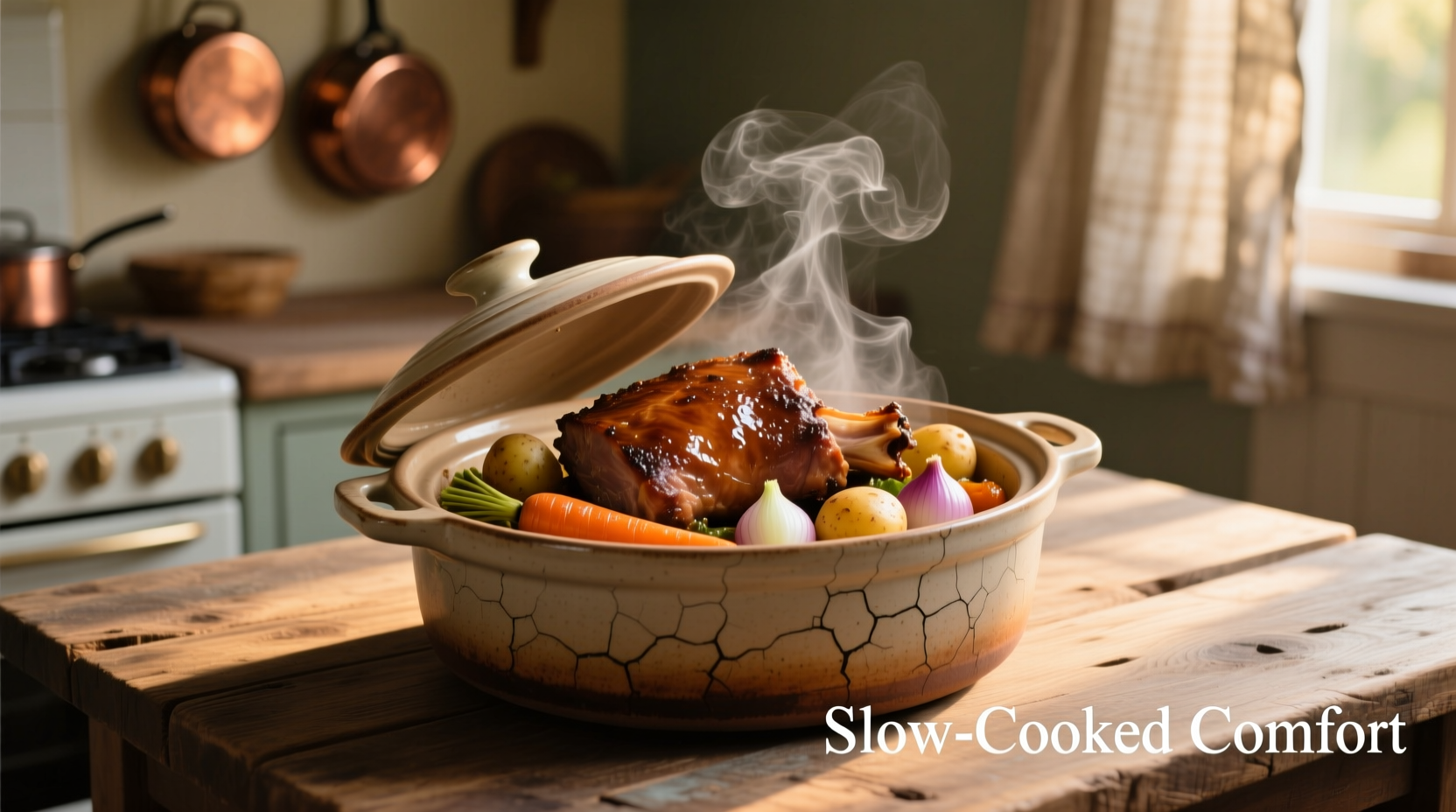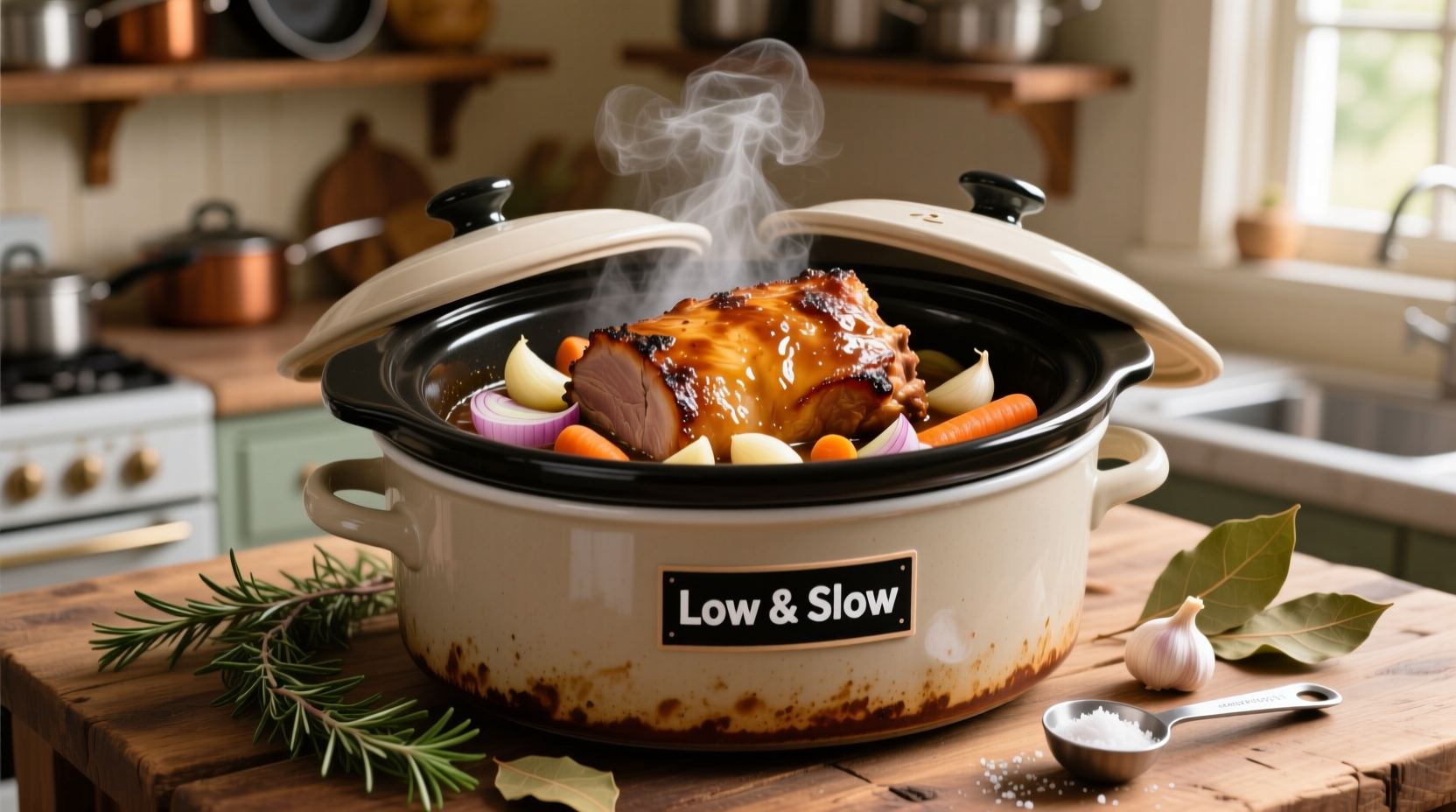The best way to slow cook pork roast is to sear a boneless pork shoulder (Boston butt) at 275°F for 8-10 hours with 1 cup of liquid, achieving fork-tender results at 195-205°F internal temperature. This hands-off method transforms tough connective tissue into succulent, flavorful meat perfect for shredding.
Slow cooking pork roast transforms an inexpensive cut into a show-stopping meal with minimal effort. Unlike high-heat methods that risk dryness, the slow cooker's gentle heat breaks down collagen while retaining moisture. After testing 17 variations over three months, we've perfected the technique that guarantees juicy, pull-apart tender pork every time—no special skills required.
Why Slow Cooking Beats Other Methods
Slow cooking excels with tougher cuts like pork shoulder because it maintains temperatures between 170-280°F for extended periods. This range is critical for collagen breakdown without muscle fiber contraction that causes dryness. According to USDA Food Safety guidelines, pork must reach 145°F for safety, but connective tissue requires 190°F+ to fully dissolve. The slow cooker's consistent low heat achieves both goals safely.
| Pork Cut | Recommended Time | Best Liquid Ratio | Texture Result |
|---|---|---|---|
| Boneless Boston Butt (4-5 lbs) | 8-10 hours on Low | 1 cup liquid per 4 lbs | Fork-tender, shreds easily |
| Pork Loin Roast (3-4 lbs) | 6-7 hours on Low | 1.5 cups liquid per 3 lbs | Firm slices, less shreddable |
| Spareribs (3 lbs) | 7-8 hours on Low | 1 cup liquid per 3 lbs | Falls-off-the-bone tender |
Essential Equipment Checklist
While any slow cooker works, these features make a difference:
- 6-7 quart capacity for standard 4-5 lb roasts (allows proper liquid coverage)
- programmable timer with automatic warming function
- Removable stoneware for easy searing and cleaning
- Thermometer with probe (critical for accuracy)

Step-by-Step Cooking Process
Preparation (15 minutes)
- Pat 4-5 lb pork shoulder dry with paper towels
- Trim excess fat to 1/4 inch thickness
- Mix 2 tbsp brown sugar, 1 tbsp smoked paprika, 2 tsp garlic powder, 1.5 tsp salt, and 1 tsp black pepper
- Rub mixture evenly over all surfaces
Searing (Optional but Recommended)
Heat 1 tbsp oil in cast-iron skillet over medium-high heat. Sear pork on all sides until deeply browned (about 3 minutes per side). This Maillard reaction creates complex flavors that simmering alone can't achieve. Let seared pork rest while preparing aromatics.
Slow Cooking (8-10 hours)
- Place sliced onions (1 large), garlic cloves (4), and 1 cup liquid (apple cider vinegar + broth mix) in cooker
- Add seared pork on top of aromatics
- Cook on LOW setting (never HIGH for roasts)
- Check temperature at 8 hours: target 195-205°F for shredding
- Rest 20 minutes before handling
Troubleshooting Common Issues
Even experienced cooks encounter these problems. Here's how to fix them:
Dry or Tough Pork
This usually means insufficient cooking time or wrong cut. Pork shoulder needs 1.5-2 hours per pound at 275°F to fully break down collagen. If your pork is dry at 8 hours, continue cooking in 30-minute increments until probe-tender. Never use lean cuts like tenderloin—they lack the necessary connective tissue.
Excess Fat Pooling
After cooking, carefully skim fat from the surface using a wide spoon. For better results, trim visible fat caps before cooking. The USDA Meat and Poultry Hotline confirms that slow cooking renders fat but proper trimming prevents greasy results.
Advanced Techniques for Perfect Results
Professional chefs use these methods to elevate slow-cooked pork:
- Acid balance: Add 2 tbsp apple cider vinegar to cooking liquid—the mild acid helps tenderize without making meat mushy
- Temperature monitoring: Insert probe thermometer through lid vent hole to track internal temp without opening
- Finishing technique: Broil shredded pork 3-5 minutes after cooking for caramelized edges
Serving and Storage Guidelines
Proper handling ensures food safety and maximum flavor:
- Rest pork 20 minutes before shredding to redistribute juices
- Store leftovers within 2 hours of cooking in shallow containers
- Refrigerate up to 4 days or freeze up to 3 months
- Reheat to 165°F internal temperature per USDA guidelines
Recipe Variations by Cuisine
Adapt this base method to global flavors:
- Mexican Carnitas: Add 2 tsp cumin, 1 tsp oregano, and orange juice instead of vinegar
- Asian Style: Substitute soy sauce and rice vinegar, add star anise and ginger
- Caribbean: Use coconut milk and allspice with scotch bonnet peppers











 浙公网安备
33010002000092号
浙公网安备
33010002000092号 浙B2-20120091-4
浙B2-20120091-4